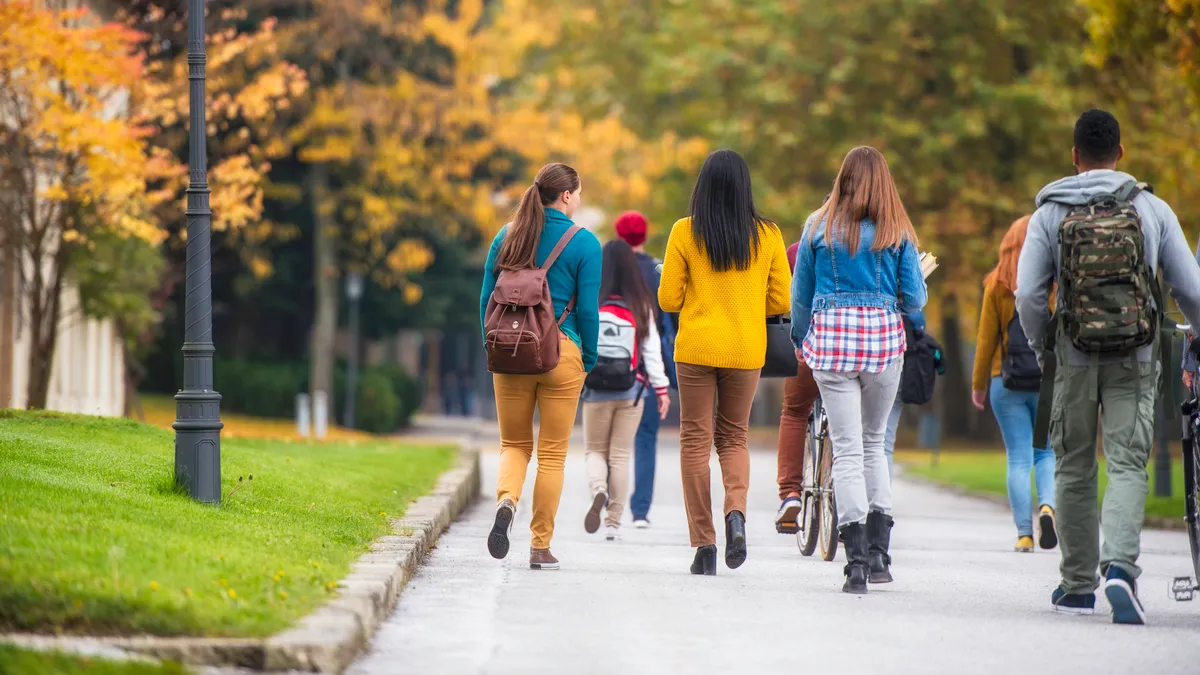Dive Brief:
- A new report from NewAmerica found public colleges are losing ground on access — nearly 60% of public institutions admitted an average of 4.6% fewer students from the lowest income households, while nearly 66% admitted an average of 5.4% of students from households in the top income quintile between 1999 and 2013.
- Roughly two-thirds of the flagship campuses represented in the survey boast a wealthier student population that they enrolled 20 years ago, however a shrinking middle class since the turn of the century has meant both significantly more low income and upper income households in the U.S.
- An increasing dependence on tuition and plummeting public support for higher education seem to work together to form a perfect storm for institutions that need to cover operational costs, even if that comes at the expense of admitting more marginalized students.
Dive Insight:
The tug of war between legislators demanding greater access for a higher number of students while refusing to fund that access has put higher ed administrators in quite a precarious situation. Not only is there a need to defend the numbers — which will sound callous no matter how it's framed — but this reality has put an additional strain on campus climate. UCLA Assistant Professor of higher education and organizational change Ozan Jaquette recently noted that the top students from the higher income backgrounds tend to be "skimmed off" by the top research institutions — the public flagships and the Ivy League institutions. Many of those who remain, he said, end up at regional public colleges on “the party track — these tend to be the affluent students that don’t take school very seriously and they’re the largest group, and end up dominating the culture.”
Ozan said from his own experience observing students while on faculty at the University of Arizona, these more affluent students, generally from out of state, often mistreat, alienate or “ignore students from lower socio-economic statuses who [already] tend to feel uncomfortable in college." This has contributed to the growing tension on campus and the rise in racial incidents and other uncomfortable situations that have put many administrators in hot water.
But increasing the socio-economic diversity of students on campus is expensive; often admitting more Pell-eligible students means the institution will need to hire more advisers and tutors and support staff to ensure they succeed on campus and graduate. A lower-income designation often means the students are more likely to have come from K-12 systems that would have ill prepared them for success in higher ed — a gap the institution must work feverishly to close.




